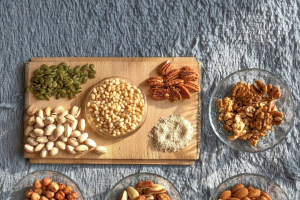Dance Your Blues Away
While dancing showed a particularly large effect, the authors didn’t give it much consideration due to the low number of studies (only five), and the low number of participants in each study. It makes sense that dancing would have a significant effect on mood though, considering it’s difficult to dance and hold on to distressed emotions. Try it sometime.
Dancing with a partner also brings in the oxytocin aspect. Oxytocin is often referred to as the “love hormone” because it plays a crucial role in forming social bonds and increasing trust among individuals.
It can improve relationships, which is a significant factor in overall mental well-being. It also has a calming effect and can reduce stress levels and anxiety by lowering the stress hormone cortisol. Music also engages your emotions, so it makes sense that music combined with physical movement might have a unique ability to change one’s emotional state.
Exercise Is 1.5x More Effective Than the Best Antidepressants
The second analysis — an overview of 97 systematic reviews5,6,7 — involved 128,119 participants who took part in 1,039 different trials. It was published in 2023. Populations included healthy adults, people with mental health disorders and people with chronic diseases.
This is the most comprehensive review of research to date, and clearly demonstrates that exercise can rapidly alleviate mild to moderate symptoms of depression, anxiety and other forms of psychological distress. Importantly, it found that exercise was 1.5 times more effective than the most prescribed antidepressants. As reported by the University of South Australia, which performed the umbrella review:8
“University of South Australia researchers are calling for exercise to be a mainstay approach for managing depression as a new study shows that physical activity is 1.5 times more effective than counselling or the leading medications …
[The study] shows that physical activity is extremely beneficial for improving symptoms of depression, anxiety, and distress. Specifically, the review showed that exercise interventions that were 12 weeks or shorter were the most effective at reducing mental health symptoms, highlighting the speed at which physical activity can make a change …
Lead UniSA researcher, Dr Ben Singh, says physical activity must be prioritized to better manage the growing cases of mental health conditions.
‘Physical activity is known to help improve mental health. Yet despite the evidence, it has not been widely adopted as a first-choice treatment. Our review shows that physical activity interventions can significantly reduce symptoms of depression and anxiety in all clinical populations …
We also found that all types of physical activity and exercise were beneficial, including aerobic exercise such as walking, resistance training, Pilates, and yoga. Importantly, the research shows that it doesn’t take much for exercise to make a positive change to your mental health.'”
Exercise Banishes Insomnia
In related science news,9 exercise also has demonstrably beneficial effects on sleep, helping to banish insomnia, which is a common complaint among those with depression.
The study, published in BMJ Open,10 included 4,339 participants, ages 39 to 67, who were followed for 10 years. Thirty-seven percent of participants consistently did not exercise while 25% were regularly active, 20% stopped being active and 18% started exercising between the beginning and the end of the study.
Compared to those who didn’t exercise regularly, those who exercised regularly throughout the study had 40% lower odds of insomnia, and this finding held true even after accounting for factors such as age, gender, body mass index, smoking history, and study location.
“Physically active people have a lower risk of insomnia symptoms and extreme sleep duration, both long and short,” lead study author Dr. Erla Björnsdóttir, sleep expert and researcher at Reykjavik University, told CNN Health, adding:11
“Our results are in line with previous studies that have shown a beneficial effect of physical activity on symptoms of insomnia, but the current study additionally shows the importance of consistency in exercise over time. It therefore matters to be physically active throughout your life in order to reduce the risk of insomnia and short sleep duration.”
If You’re Over 40, Avoid Jogging
While many studies stress the importance of high-intensity exercise for depression, a systematic review and meta-analysis published in the March-April 2023 issue of Missouri Medicine12 highlights the importance of proper exercise dosing depending on the type of exercise performed.
When it comes to jogging, people over 40 increase their risk of atrial fibrillation by a massive 500% to 800% from this type of exercise. What they concluded is that once you get into your mid-40s and 50s, exercise should be fun and stress-reducing, not competitive.
High-Intensity, High-Volume Exercise Backfires After a Certain Point
Other types of high-intensity exercises can also backfire if you do too much of them. The 2023 Missouri Medicine analysis13 found that while vigorous exercise up to 75 minutes per week reduced the risk of all-cause mortality and other diseases in a dose-dependent manner, benefits plateaued after that.
So, people who were doing four to seven hours of vigorous exercise per week didn’t get any additional benefit, and from a cardiovascular standpoint, lost some.
Endurance exercise such as jogging and running can also cause drastic elevations in cortisol, which can wreck your health. One of the functions of cortisol is to raise low blood sugar, but it does this by breaking down your muscles, bones and brain.
Moderate Exercise Cannot Be Overdone
On the other hand, they found that you cannot overdo moderate exercise, loosely defined as exercising to the point where you’re slightly winded but can carry on a conversation. Examples include gardening, walking, recreational bike riding, yoga, nonintense swimming and pickleball.
Perhaps even more surprising, moderate exercise also improves all-cause survival better than vigorous exercise — about two times better.
Walking is perhaps one of the best forms of exercise. It’s about 2,000 steps per mile, and every 1,000 steps you get on average per day reduces your mortality by 10% to 15%. Benefits don’t plateau until you reach 12,000 steps a day, but you never start losing benefit from walking too much.
“Compared with undertaking no resistance training, undertaking any amount of resistance training reduced the risk of all-cause mortality by 15% … cardiovascular disease mortality by 19% … and cancer mortality by 14% …
So, the take-home message here is that 20 minutes of strength training twice a week on non-consecutive days, or 40 minutes once a week, is the sweet spot for optimal payoff in the long term. You also don’t want your exercise regimen to center around strength training. It should be an add-on, as you get far greater long-term benefits simply from walking, or any other moderate exercise.
A dose-response meta-analysis of four studies suggested a nonlinear relationship between resistance training and the risk of all-cause mortality. A maximum risk reduction of 27% was observed at around 60 minutes per week of resistance training … Mortality risk reductions diminished at higher volumes.”
Doing more than one hour of strength training per week will begin to negate longevity benefits. Moderate exercise such as walking, however, cannot be overdone.
As noted by lead author Dr. James O’Keefe, a cardiologist with the Mid-America Heart Institute at St. Louis Hospital in Kansas City, whom I interviewed about these results:
“Japanese people who live in Tokyo, one of the biggest cities in the world, will get on a bullet train and an hour or two later be at the mountains and in the forest. They go hike around or even just sit in nature and smell the pine and the fresh air. Then they get on the bullet train and go back home.
They show reductions in blood pressure and improvement in mood. And there’s really, really strong benefits … It’s been shown to … reduce anxiety and improve sleep …”
So, in conclusion, if you struggle with depression, a consistent exercise routine should be your first priority. Just make sure you get the exercise volume or dosing correct for the type of exercise you’re doing so that you’re not inadvertently negating other benefits.
https://articles.mercola.com/sites/articles/archive/2024/05/17/therapeutic-potential-of-exercise-for-depression.aspx









